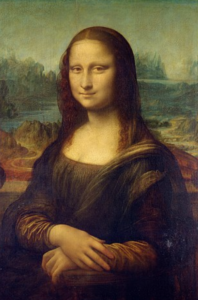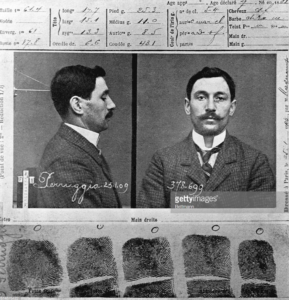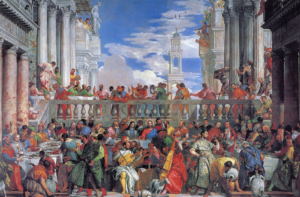Ever wonder why the Mona Lisa is such a big deal?
Sure there’s her enigmatic smile, and the mystery surrounding the identity of the model, and the oddly fantastical landscape in the background. And, yes, she was painted by one of art history’s darling geniuses, Leonardo Da Vinci, who was also a self-taught engineer, master procrastinator, and persecuted bisexual–for all of which we love him even more.
But though Mona Lisa (who also goes by the name La Gioconda) was born in the 16th century and has been on display in the Louvre since its opening shortly after the 18th century French Revolution, she was well-known primarily among the French art intelligentsia until the early 20th century.
On today’s date, August 21, in 1911, Mona Lisa went missing, but her absence wasn’t noticed for 28 hours. At first, museum staff assumed she’d just been misplaced. Imagine losing track of the Mona Lisa today!
In a short bit of time after the theft was announced, Mona Lisa became a worldwide celebrity. Her photo splashed newspapers around the globe and one New York Times reporter remarked that the theft had caused “such a sensation that Parisians for the time have forgotten the rumors of war.”[1] (Pre-World War I tensions between France and Germany, had already become heated at the time.)

Mona Lisa, Leonardo Da Vinci, 1517
Two years passed before authorities recovered the painting, during which time newspaper readers everywhere followed the efforts to track her down.
The Mona Lisa had been lifted off the wall, removed from her frame, covered in a blanket, and carried out of the museum by three Italian immigrant workmen at the Louvre. As it goes with immigrant groups everywhere, Italians were much maligned and exploited in early-20th century France. It’s possible that the three thieves were simply trying to take down the master’s house, or that they thought they could profit from selling the painting on the black market, or that, as ringleader Vicenzo Perugia claimed, they were on a patriotic mission.
When he was arrested for the heist, Perugia said that he was simply trying to return a painting that Napoleon had looted from Italy to its proper home. If he sincerely believed this, he was mistaken. Da Vinci himself had given the painting to King Francis 1 during a time when the painter was living in exile in France.

Vicenzo Perugia’s Mug Shot
During the two years that Mona Lisa was in Perugia’s possession, she lived in the false bottom of a trunk in the thief’s tiny apartment. Today she hangs behind bullet-proof glass on a wall in the Louvre, and it’s hard to get anywhere near her. You’ll have to elbow your way through all of the other adoring fans to get 2 seconds with her and snap a selfie that will likely turn out bad because of her bullet-proof enclosure.
You can thank Perugia for the fact that you know about the Mona Lisa and for your lousy selfie.
Mona Lisa is highest valued painting in the world, estimated at $782 million in 2015, and the Louvre is the most visited art museum in the world, receiving over 8 million visitors in 2017. Many of those visitors come just to see the Mona Lisa, which is good for her and not so good for many of the other artworks in the museum. Just across the gallery from Da Vinci’s painting hangs Veronese’s masterpiece, Wedding at Cana, which most visitors rush by without a glance in their haste to get a glimpse of that famous smile.

Wedding at Cana, Paolo Veronese, 1563
If you’d like to know more, listen to art historian Lorraine Kypiotis discuss the theft on the Australian Broadcasting Corporation. Or, for an amusing take on the incident, watch Season 5, Episode 9 of Drunk History. They don’t get all of the historical details right, but watching Jack Black play Perugia is priceless.
[1] “‘La Gioconda’ Is Stolen in Paris” Special Cable to THE NEW YORK TIMES.
New York Times (1857-1922); Aug 23, 1911.




